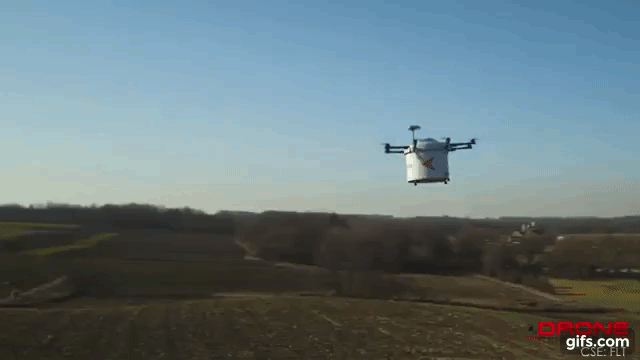Drone delivery in the works for Canada, but hurdles remain

From Christmas presents to the Super Bowl halftime show, drones are showing up in new places all the time. But the drones that will soon begin flying the skies over Foremost, Alberta are part of a new industry for Canada: drone deliveries.
In October Drone Delivery Canada, based in Toronto, began its drone-delivery testing in southern Ontario. Last month the company announced it would expand its testing to Foremost and on Monday the company announced $7 million in special warrant financing.
“We’re learning how to crawl with this technology, with the government, with the regulators,” Tony Di Benedetto, CEO of Drone Delivery Canada, tells Yahoo Canada Finance. “It’s baby steps.”
There’s big potential for drone delivery in Canada, Di Benedetto says, and his company has spent time since its 2014 launch developing technology specific to this country’s geography. A key part of that involves the development of an in-house autopilot system for drones, for which they’ve been working with Sebastian Fischmeister of the University of Waterloo.
The work now involves daily testing of the autopilot system and the drone airframes in the Canadian climate and to client specifications, Di Benedetto says, with a goal of commercialization of drone delivery in Canada in early 2018.
“We spent a lot of time really understanding where the regulators saw this technology, where they saw a home for it in Canada,” Di Benedetto says. Drone Delivery Canada has worked with the University of Toronto and the University of Waterloo and received their first license for Beyond Visual Line of Sight (BVLOS) drone delivery testing from Transport Canada in October 2016.
But Ciara Bracken-Roche, who researches unmanned aerial vehicles at Queen’s University, believes that it will be a few years before full-scale drone delivery is happening in Canada. “It would be at least five years, I’d imagine, before we can see full scale operations of package delivery at the commercial level,” Bracken-Roche says. “We need to deal with BVLOS and with challenges drones have with their payload capabilities–the size, weight of packages they could carry.”
Drone Delivery Canada is still testing in the Kitchener-Waterloo, Ontario area, Di Benedetto says, but they’ll soon be making the move to Foremost to test in one of Canada new drone test ranges.
“We’re going to go to Formats with our partners and possibly after that we’re going to Alma, Quebec, which we believe is going to be the next federally approved test range,” Di Benedetto says. In general Drone Delivery Canada is looking to rural areas of the country for its testing sites. “We see an immediate need there, and it’s also big wide open spaces,” he says.
But several hurdles to widespread drone delivery in this country remain. There are safety concerns to consider related to drones and other aircraft, for example. In December flights were briefly halted at Billy Bishop Airport in Toronto when an object suspected to be a drone was seen flying in its airspace.
“There is a risk to other airspace users, and the risks can be divided up between people, property and ground and other airspace users,” Bracken-Roche says. Drones are piloted externally, she says, which requires different safety considerations than those for aircraft with a pilot on board, as do the different communications and signalling systems.
“Small aircraft are also harder to see for other airspace users so that is another factor that has to be considered when regulations are being developed,” Bracken-Roche says.
Di Benedetto says that the need for drone delivery already exists in Canada, and the technology and regulation are in development to fill it.
“Really it’s a technological feat, what happens,” Di Benedetto says of drone flight. “It’s more than just flying a drone. The drone is probably the least of the solution, to be quite honest. It’s the backend systems, the way it all ties together with our clients, the regulators, the air traffic control—-that’s really what it’s all about.”
And Canada’s large land mass, spread out population, and expanses of open space make this country a great place both to test drone delivery and to bring it to market, Di Benedetto says. In particular drone delivery could serve Canada’s northern regions in the future, he says. Working together with the government to develop regulations around this emerging industry is party of pushing that forward just as developing the technology is.
“We’ve simply spent a lot of time with them to really understand where they see this vision and where they see the applications, to really take these baby steps with them and prove it out,” Di Benedetto says of the federal government. “We’re actually quite fortunate in this country that our government is quite focused on technology and innovation, and we’re working with them.”

 Yahoo Finance
Yahoo Finance 
